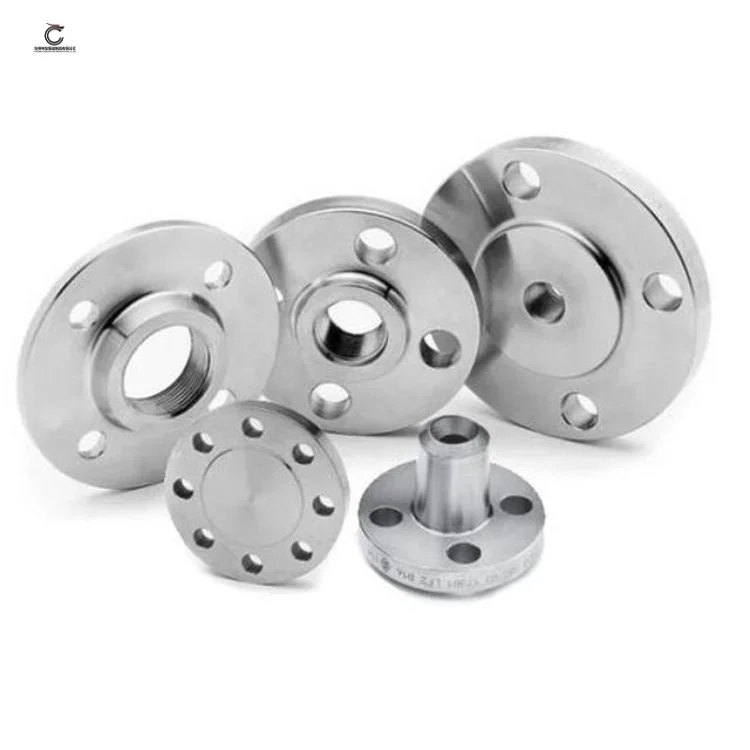Types of Flanges
Flange is an important component for connecting pipelines and equipment, which can make the pipeline system stronger and safer. Widely used in petroleum, chemical, pharmaceutical, food, and other industries. According to different connection methods and uses, flanges can be divided into various types.

Classified by Connection
(1) Butt welding flange: Butt welding flange is a connection method that welds flanges and pipes or equipment together. This connection method has the advantages of simple structure, high strength, and good sealing performance, and is often used in high-pressure, high-temperature, and highly corrosive occasions.
(2) Threaded flange: Threaded flange is a connection method that connects flanges and pipes or equipment through threads. This connection method is suitable for low pressure, low temperature, and small diameter occasions, and has the advantages of easy installation and disassembly.
(3) Welding flange: A welding flange is a connection method that connects flanges and pipes or equipment by welding. This connection method is suitable for high-pressure, high-temperature, and large-caliber occasions, and has the advantages of compact structure, high strength, and good sealing.
Classified by structure
(1) Flat welding flange: a flat welding flange is a structural form in which the planes on both sides of the flange are processed into planes. This kind of flange has a simple structure and is suitable for low pressure, low temperature, and small diameter occasions.
(2) Butt welding neck flange: butt welding neck flange is a structural form in which both sides of the flange are processed into a neck shape. This kind of flange is suitable for high pressure, high temperature, and large diameter occasions, and has the advantages of high strength and good sealing performance.
(3) Blind flange: A blind flange is a flange that closes a pipe or equipment, and is used to close one end of the pipe or equipment. This flange is suitable for occasions where pipelines or equipment need to be temporarily closed or closed.
Classified by material
(1) Carbon steel flange: Carbon steel flange is a commonly used flange material, suitable for general industrial occasions.
(2) Stainless steel flange: Stainless steel flange has the advantages of corrosion resistance and high-temperature resistance, and is suitable for chemical, pharmaceutical, food, and other industries.
(3) Alloy steel flange: Alloy steel flange has the advantages of high strength, high temperature, and corrosion resistance, and is suitable for high pressure, high temperature, and strong corrosive occasions.
To sum up, there are many types of flanges, and different types of flanges are suitable for different piping systems and usage scenarios. Choosing the right flange can improve the safety and stability of the piping system. When selecting and using flanges, it is necessary to comprehensively consider the actual situation and choose the most suitable type.
Carbon Steel Flange & Stainless Steel Flange
Advantages and scope of use of sliding flanges






